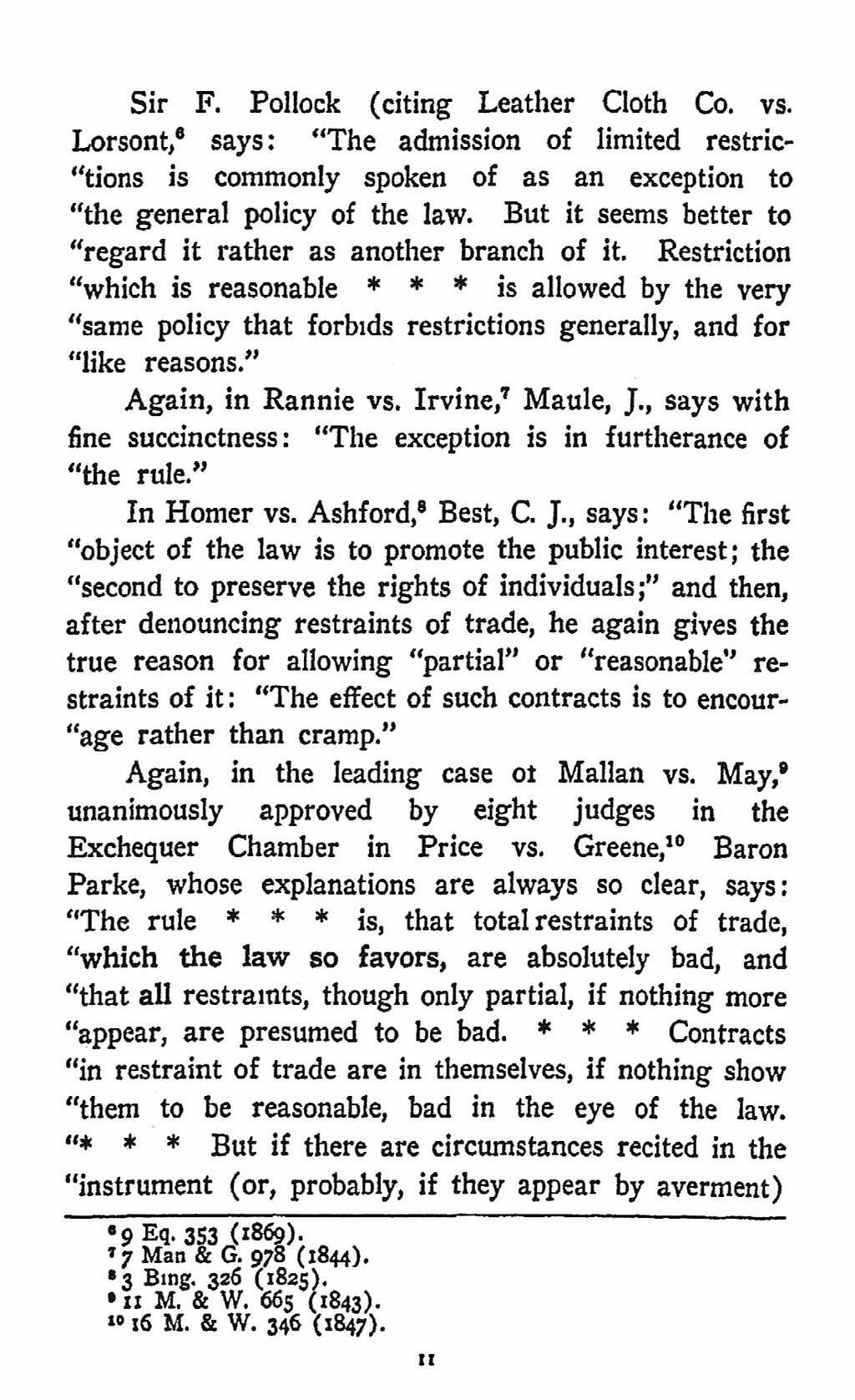Sir F. Pollock (citing Leather Cloth Co. vs. Lorsont[1]) says: "The admission of limited restrictions is commonly spoken of as an exception to the general policy of the law. But it seems better to regard it rather as another branch of it. Restriction which is reasonable * * * is allowed by the very same policy that forbids restrictions generally, and for like reasons."
Again, in Rannie vs. Irvine,[2] Maule, J., says with fine succinctness: "The exception is in furtherance of the rule."
In Homer vs. Ashford,[3] Best, C. J., says: "The first object of the law is to promote the public interest; the second to preserve the rights of individuals;" and then, after denouncing restraints of trade, he again gives the true reason for allowing "partial" or "reasonable" restraints of it: "The effect of such contracts is to encourage rather than cramp."
Again, in the leading case of Mallan vs. May,[4] unanimously approved by eight judges in the Exchequer Chamber in Price vs. Greene,[5] Baron Parke, whose explanations are always so clear, says: "The rule * * * is, that total restraints of trade, which the law so favors, are absolutely bad, and that all restraints, though only partial, if nothing more appear, are presumed to be bad. * * * Contracts in restraint of trade are in themselves, if nothing show them to be reasonable, bad in the eye of the law. * * * But if there are circumstances recited in the instrument (or, probably, if they appear by averment)
